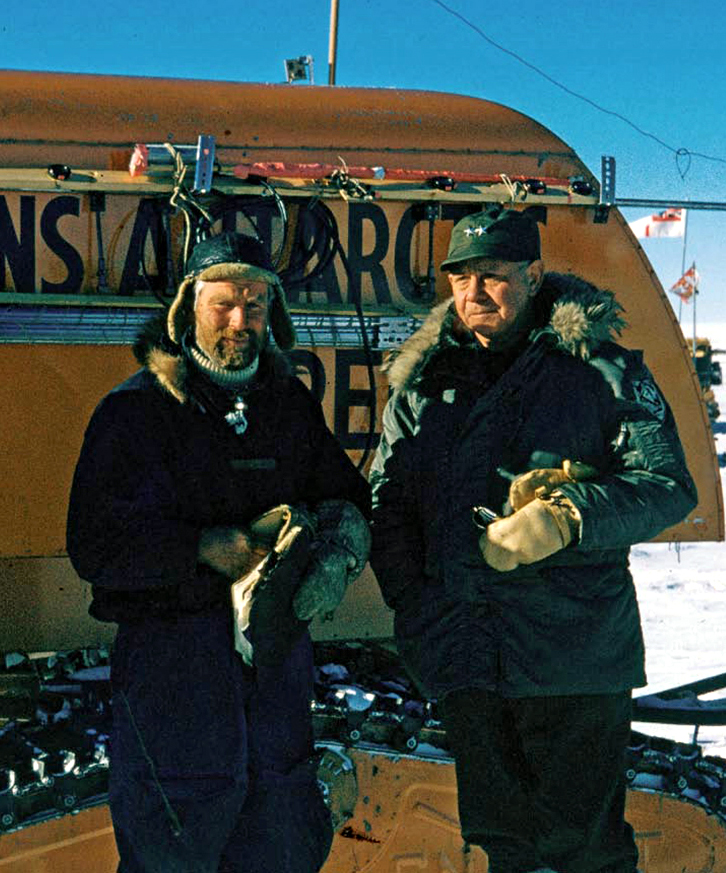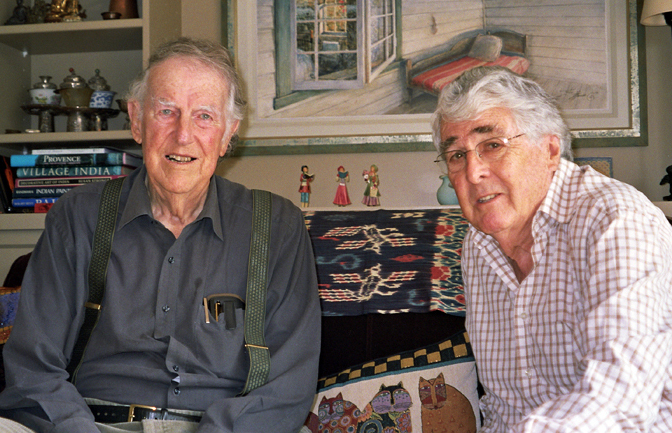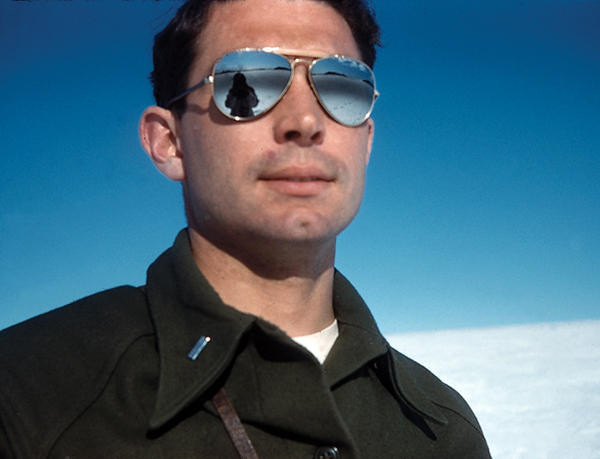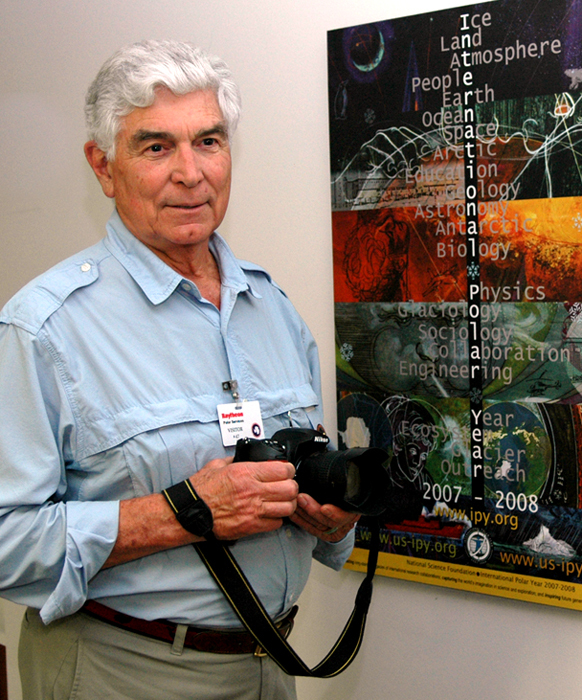|
Together againIGY veterans reunite to write book, make movie about past and future adventuresPosted January 2, 2009
Morton Beebe It seemed natural at the time, after he had regaled her with stories about adventures on the Ice during the International Geophysical Year (IGY) At some point during the conversation, the invitation just escaped his lips. “Well, she thought about it rather seriously,” he recalls, laughing at the memory and the subsequent tongue-lashing he received from superiors. The bold invitation of the 24-year-old officer, a favorite of Rear Adm. George Dufek, commander of the Navy’s Operation Deep Freeze in support of IGY, made headlines around the world the next day. Now 74 but still with head of thick, curly white hair, Beebe has a seemingly endless supply of anecdotes from his time as a public affairs officer whose job included writing articles and shooting pictures, as well as juggling the needs of a rowdy press corps of some 35 journalists. He turned the experience into a lifelong career as a photographer and has traveled around the world a few times in the last five decades. But those months in Antarctica left an indelible mark on the San Franciscan. He recently reconnected with a fellow IGY compatriot, Geoffrey Lee Martin, and the two have hatched a plan to return to the Ice for a documentary trip down memory lane. However, at this time, the National Science Foundation Lee Martin, a journalist now based in Sydney, wrote for publications such as The Daily Telegraph out of London and the New Zealand Herald during the austral summers of 1956-57 and 1957-58. He accompanied fellow New Zealander Sir Edmund Hillary on the adventurer’s historic overland trip to the South Pole, and recently wrote a book about the journey, “Hellbent for the Pole.” Lee Martin, 81, is now at work on a volume focusing on Dufek, and enlisted Beebe in that project. The latter, still the bold, young lieutenant in some ways, upped the ante. “Why not?” Beebe told his old friend. “Let’s see if we can get together and do this book on Dufek. And let’s go one step further, and see if we can go back to the Ice.” Both men consider Dufek a pivotal, if forgotten, figure of the era, overshadowed by the legendary Adm. Richard Byrd, a polar explorer who served more as a figurehead by the time of the IGY endeavor. Lee Martin wrote extensively about Dufek in his recent book, but he now wants to flesh out the admiral’s story even further. “He led the first party to the South Pole since [Capt. Robert Falcon] Scott 44 years earlier, but this received scant attention, even in the U.S. where people were preoccupied with a presidential election, the Cold War and the development of the hydrogen bomb,” Lee Martin says via e-mail from Sydney when asked about his interest in Dufek. Much has changed in the last 50-plus years since the U.S. Navy established a beachhead on Antarctica, allowing an invasion of scientists that hasn’t abated since. It’s that story, the passage of time, which Beebe and Martin want to tell — and to see the changes firsthand. “It was only after I had written ‘Hellbent,’ 50 years later, that I realized that what we did was now regarded as ‘ancient history,’” Lee Martin muses, “but on reflection, when we were down there, 1956-58, it was 50 years since Scott and [Ernest] Shackleton had arrived in McMurdo Sound and built their huts — and we, at that time, regarded them as ‘ancient history.’” Indeed, the days of ham radio are long gone, when a call home to parents or a girlfriend was a rare treat. “You stood in line no matter what your rank or position outside of one little shed to see if you could get up on the ham radio,” Beebe recalls. Today, e-mail is ubiquitous, even in the deep field, thanks to Iridium satellite. 
Photo Credit: Geoffrey Lee Martin
Adm. George Dufek, right, greets Vivian Fuchs at the South Pole on Jan. 20, 1958.
Similarly, the Cold War has finally thawed. Women make up a sizeable percentage of the workforce and NSF grantees. The one female journalist sent to cover the IGY was forced to work out of Christchurch, according to Beebe. A visit to a Russian research station during those years, he adds, involved a certain amount of anxiety. He remembers being volunteered as the first one to go ashore to see “if they’re friendly.” Judging by the bowls of caviar and bottles of vodka awaiting him at the base, the Russians were willing to enjoy a tête-à-tête with their American counterparts. The IGY, Lee Martin says, marked the end of the heroic age of exploration, ushering in the modern scientific era of peaceful cooperation among nations. The legacy continues today with the IPY. Lee Martin worries that history is lost on today’s generation, another prompt for making a documentary that pays homage to the challenges and sacrifices of an earlier generation, particularly that of Dufek, who Martin quotes as saying about his role in the IGY: “Quiet victories in the service of knowledge.” |



For USAP Participants |
For The Public |
For Researchers and EducatorsContact UsNational Science FoundationOffice of Polar Programs Geosciences Directorate 2415 Eisenhower Avenue, Suite W7100 Alexandria, VA 22314 Sign up for the NSF Office of Polar Programs newsletter and events. Feedback Form |







